
Hangout Time
Monday and Tuesday, 2:20-3pm
Thursday, 1:20-2pm
Hangout time is an opportunity for students to play and collaborate. Cunningham & Allington (2011) mention that effective classrooms expect children to work together and take responsibility for their learning. During hangout time, children first co-create literacy and math games and then play them.
Hangout Time Schedule:
Monday: Literacy games
Tuesday: Math games
Thursday: Any educaitonal game
Literacy Games

Figure 1: The game is set up differently every time, which adds excitement and novelty.
Literacy Food Groups:
-
Motivation for literacy
-
Vocabulary
-
Letter-sounds/phonics
-
Phonemic awareness
-
Spelling and word study

Musical Language
Materials:
-
Flat chimes (picture) or another instrument like the xylophone
-
Paper squares or rectangles for writing sounds or words
Children who play the game together:
-
Supinder (reading late stage 1) and Daniel (reading late stage 1)
-
Rainbow (reading early stage 2) and Liang (reading early stage 2)
How to play:
This game is optimal for two people. One player begins by setting up the game using the chimes and letter paper squares (symbolises sounds) to represent each note on the chimes.
Once player one sets up the game (as shown in Figure 1), he or she verbalizes a certain order of the sounds of the letter squares. Player two finds the squares and plays the corresponding note on the chimes. It can become more difficult by extending the song longer each time, because this involves working memory. Here is an example of what player one might say based on the game set-up photo: /g/, /l/, /m/, /m/. A more challenging example would be: /g/, /l/, /m/, /m/, /u/, /o/, /d/. If the game is too strenuous, notes can be played right after each sound is verbalized. Once player two has had the opportunity to play three songs that became progressively more challenging, the roles switch and player one has the opportunity to play the chimes. If the players are very pleased with a certain song they created, they can record the song on paper by drawing the game set-up and then writing the sound order of the song. They can also record the song on the iPad to share with their peers.
This game is not meant to be a competition, rather a collaboration to compose beautiful music based on a shared interest.
The alternate game created by Rainbow and Liang uses sight words on rectangle pieces of paper, instead of letter sounds. It would look something like Figure 2. Therefore, a song would be created through verbalization of words in a certain order. For example: first, write, first. A more challenging example would be: first, write, first, wash, around, around, around.
Figure 2: The words were taken from the Dolch Second Grade sight vocabulary.
Sportsfriends (a word game)
History of the Game:
-
This game was created by Emmet, Christine and Daniel. All three students recognized their interest in sports which require scoring on a net. All of three of them are working on improving their ability to read and write words quickly. They are particularly focused on short words. As sports fans, they like competing with one another in a safe manner where they can have fun, learn, and win at the same time.
Materials:
-
Pomp oms, or anything light rolled into a small sphere like a ball (example: small scraps of paper crunched into a ball)
-
Blank paper for all players to record their words
Players:
-
Emmet, Christine and Daniel can play this game together
-
Need a minimum of 2 players
-
Can form teams of 2, or play individually
Sportsfriends is a great way for students to receive independent phonics instruction. The game engages students in the class who like sports, competing, and playing, making it a highly motivating literacy activity. In this game, students will learn the relationship between the letters (graphemes) of written language, and the individual sounds (phonemes) of spoken language (National Institute for Literacy, 2001). Through this understanding, students learn to read, write and spell short words immediately. The game is played on a circular board created by the students (about as big as a Bristol board). Around the edge of the circle are multiple soccer, hockey and basketball nets. At the centre of these nets are cards with single letters on them. For example, one net might have an s, another might have an i, and another might have a t. In the middle of the board are 8 pegs, in pairs of 2. Each pair will be spaced out, and face in different directions (looking like a square). Across each pair of pegs will be a rubber band (4 total rubber bands). When it is a player’s turn, he or she will take a pomp om, sling it back on the rubber band, and try to hit one of the nets with a letter on it. The student can choose which letter he or she wants to try and hit. Once that letter is hit, the student writes that letter down. If a student misses the net, they do not write anything and allow the next player to take a turn. It is important to remember that our junior grade students are mature and are a part of a great community we have in the classroom, ensuring that rubber bands and mini slingshots are not an issue. Furthermore, the edge of the circular Bristol board has a rotating “fence” which slides along the outside of the board. The “fence” stops any pomp oms from flying around the room.
Procedure, Purpose and Outline
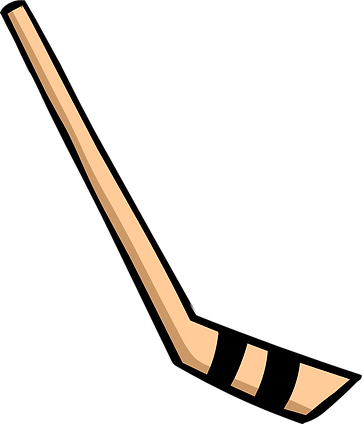
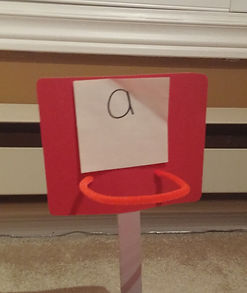

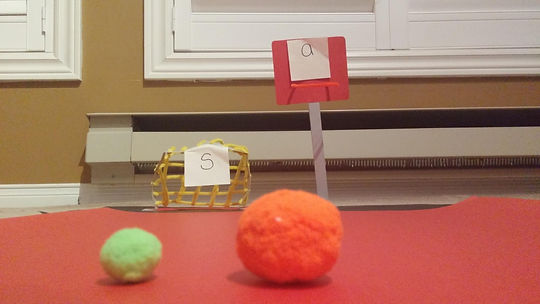

Each student will keep taking a shot at a net, writing down any letters they receive. The goal of the game is for students to try and make as many words as possible with the letters they have. The person with the most words at the ending wins. Students are free to aim at any net they wish. If a student wants to make the word bat, they can take three turns trying to score on the nets with those letters. Otherwise, the students can just aim at random letters (including vowels), and see which words they can create from what they have. Once they have enough letters to make the word, they write it down. That same student may also make the word tab with the letters from bat. Once a student has scored on a net for a particular letter, he or she do not need to score on that net again to use the letter. Instead, the student can reuse the letters they have as many times as they want. Students can also collect 4 letters and try to make 3 letter words out of the letters they have. To ensure that students are not becoming overwhelmed by having access to many letters, they can choose to create as many words as possible from their small selection of letters before they begin shooting at new nets.
At the ending of the game, the students reveal the letters they had and all of the words they made. The person with the most words wins the game. The board will not have 26 nets representing the letters of the alphabet due to space. Once students feel that they have used a letter enough, they can swap a letter card on one net for a new letter, creating more opportunities to make different words. For students who really want to be challenged or for those who cannot recall that s and h together makes a /sh/ sound, one card with the sound /sh/ on it can be placed on one net, opening up more opportunities. Some of our students are really competitive and will enjoy trying to score on a net more than anything. To increase engagement, there will be extra cards with letters on them, however these cards will be smaller in size compared to the original deck. This way, students can place the smaller cards with letters in the corners of the hockey or soccer nets. Students can then try to hit the cards in the corner of the net, which is more difficult and potentially more fun than hitting a bigger card in the middle of the net. To prevent students from continuously missing and not getting any letters to make words, there will be a rule in place indicating that after 3 misses, a student must pick a letter and write it down.
Food Groups:
-
Motivation for literacy
-
Letter-sounds/phonics
-
Phonemic awareness
-
Spelling and word study
-
Phonics instruction
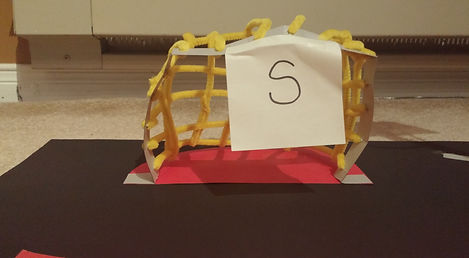

In addition to learning the connection between the letters and the sounds they represent, students are working on their phonemic awareness. For example, if a student has the letters p, s, a, t, they can create the word pat. They can also substitute the letter p for an s, which creates sat. As a result, students will be working on phoneme substitution. As students play the game, they will also be indirectly working on phoneme addition and deletion to create new words, phoneme blending to help them write full words, and phoneme isolation when they target specific letters for the words they are thinking of (National Institute for Literacy, 2001).
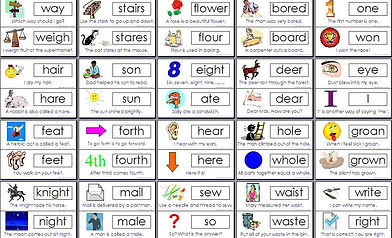
Literacy Food Groups:
-
Motivation for Literacy
-
Vocabulary
-
Letter-sounds/Phonics
-
Phonemic Awareness
-
Spelling and word study


Homophone Games
Homophone Matching Games: 2 packs of homophone cards. Each card has a matching homophone eg. hear/here. On each card is a homophone and an example of how it can be used in a sentence eg. hear: I can hear you / here: I am sitting here. Students can play "Go Fish" (2 or more players) or "Concentration" (1 or more players) whereby they try to pair matching homophones.
Saying and Spelling the Homophone: Students are encouraged to read the homophone word out loud. More advanced players are encouraged to spell it as well. Eg. In "Go Fish" a student may ask: "Do you have sun (advanced: s-u-n)?"
Playing "Concentration" alone: Students are encouraged to time themselves when playing alone to track how quickly they can complete the game. Students have personal sheets with a timing table where they are encouraged to fill in their time for each game they play. Students can indicate # of cards matched / all cards matched and time to copmlete: x minutes.
Level 1: Word + Matching Picture + Word used in a sentence
Level 2: Word + Word used in a sentence
Homophone Dominoes: (2 - 4 players)
Dominoes Pack with two words with matching pictures. Match each side with the corresponding domino pieces. The player to put down all their Homophone Dominoes first wins.
What new words are covered in science or social studies, we incorporate these into our Homophone Dominoes pack. eg. Muscle and Mussel

Learning Upgrade
Literacy Food Groups:
-
Motivation for literacy
-
Vocabulary
-
Letter-sounds/phonics
-
Spelling and word study
-
Oral language
-
Reading comprehension strategies
-
Text structures and genres
-
Concepts of print
-
Writing conventions
Each student has their own Learning Upgrade profile which can be tracked to see students' progress. Based on the needs and progress of each student, and where we are in the year, various levels within Learning Upgrade are unlocked. There is Learning Upgrade for Language Arts and Math accessible on both a computer, online or on an iPad.
Each game begins with an introductory mini lesson using engaging music and colourful animation with multi-cultural characters and voices. Students are then given a short series of challenges based on that mini-lesson. Students may repeat, shuflfle through or skip a mini-lesson at any time. Students gain a broznze, silver or gold badge depending on how accurately they comleted each challenge. Students will be required to repeat any questions they received less than a gold badge (>95% accuracy) to move on to the next level.
Students can also play Learning Upgrade at home with their personal login. As teachers, we can customize detailed reports of each students' progress, including number of tries, time taken, accuracy, and how they are doing in relation to their classmates (or even the school).
More on Learning Upgrade: http://blog.learningupgrade.com/
 English Upgrade 1 |
|---|
 Pronoun Mini Lesson |
 Pronoun Mini Lesson |
 English Upgrade 2 |
 Reading Upgrade |
 Vocab Mini Lesson |
 Comprehension Upgrade |